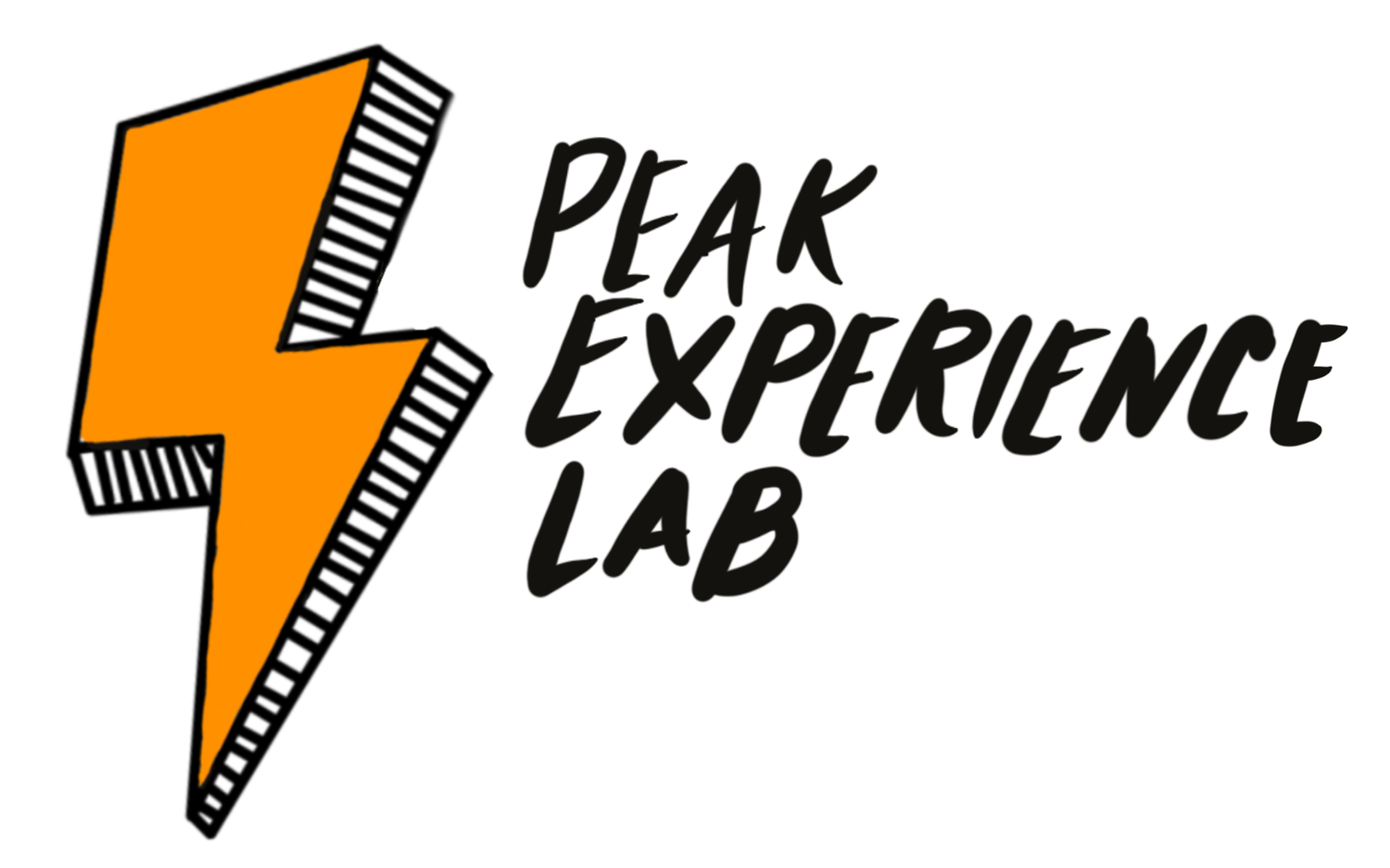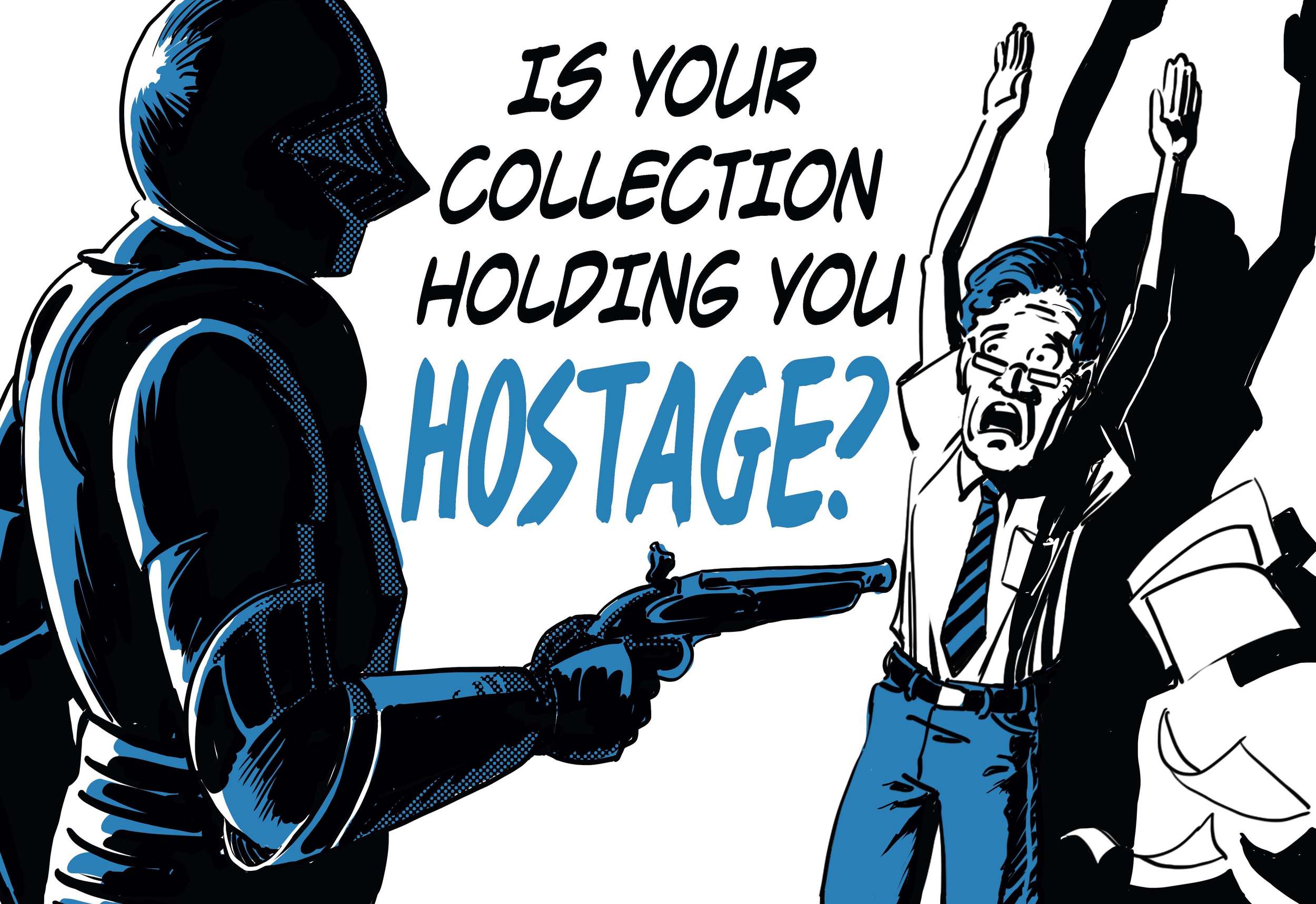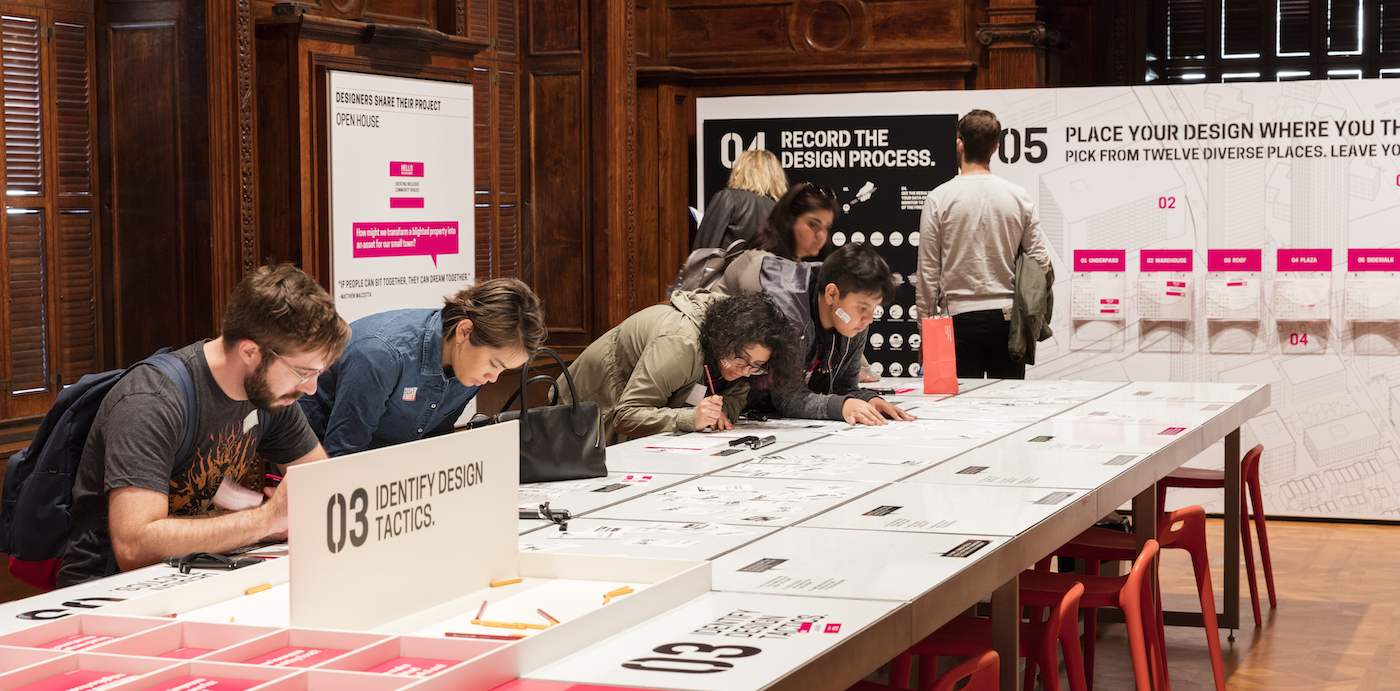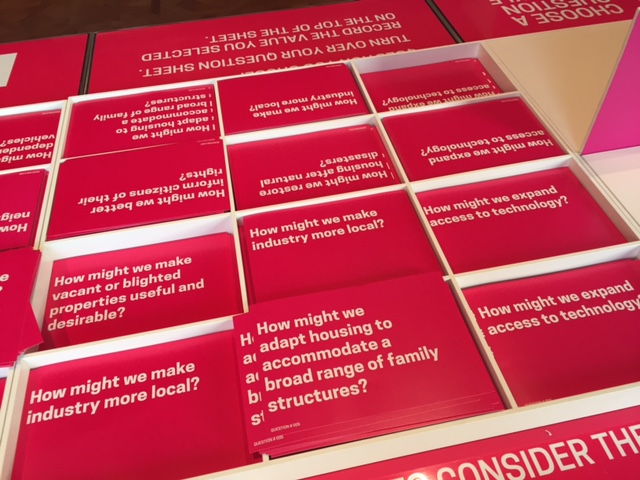Museums, Can We Stop Letting Objects Control the Narrative?
It’s rare that you can remember the exact moment when your thinking changes. But I can pinpoint the project that altered my perspective about the role of objects in museums. In 2013 I was designing a new school tour for the Atlanta History Center. We wanted to replace the old Black History tour (which had content that was mile-wide-inch-deep) with something more dynamic and relevant. Research told us there was a big demand for programming around the Civil Rights Era. But the museum had only one object on display from the movement. How would we build a tour around one object?
The answer: take objects out of the equation.
In focusing solely on the experience and the story we wanted to tell, we freed ourselves from the constraints of objects that either didn’t exist or didn’t tell the right story.
Hallelujah! It was like a weight had been lifted. Suddenly anything was possible. Have you ever been compelled to tell stories that are important to the human species, but that your collections don’t support? Maybe it’s time to think about using your collections as a sideshow instead of the main event.
Reinventing school tours at the Atlanta History Center was a part of grant-funded initiative called “Meet the Past.” It called for theatre-driven “immersive” learning in all educational programming. So we had a strong drive to make the tour completely experiential. I think that’s what gave our brains permission to think outside the box. I started to realize that I could create worlds where they didn’t exist if I thought creatively. At first it was daunting, but ultimately freeing. The circumstance reminded me of my teaching days when an administrator said, “You’re teaching anthropology this semester. There’s no textbook or curriculum. Good luck.” This led to a total freak out . . . followed by the best semester I ever had.
"Fight For Your Rights" would be the museum’s first field trip program that excluded object-based learning completely. For a simulation of the 1961 Freedom Rides we created a bus façade out of plywood. We held sit-ins in the museum’s café. And we appropriated part of a folk art exhibit for a church rally on voter registration. We used photographs to anchor the experiences in history, but no objects. The program, called “Fight For Your Rights” was an immediate success. Student visitation increased by more than 50%, compared with the old tour. [for more pics & info see Portfolio page]
But didn’t teachers complain about a school tour without any real artifacts? No, quite the opposite. School groups come for a unique experience that they can’t get in the classroom and a more visceral experience with academic content. I don’t think they care how they get it, whether it’s by seeing objects or having experiences. The feedback we got after launching the new tour indicated that kids gained a deep understanding of using non-violent action to affect change – and about the power of being an ordinary person protesting an unjust system. I don’t know if that can be accomplished in the same way with objects.
Equally important, social justice topics don't always come with a nice set of objects to tell the story. Sometimes histories of the oppressed and marginalized never get collected by museums - especially in the past. But this doesn't have to be a deterrent if we make objects less central to our educational missions (which includes the physical galleries).
"Fight For Your Rights" school tour, Atlanta History Center. Shown here: Freedom Riders simulation using plywood bus.
Don’t get me wrong, I believe there is real power in objects. “They can be almost spiritual links to the past,”
says my exhibit designer friend Isabella Bruno (formerly of the 9/11 Museum, now a fellow freelancer). Would I have loved to show students the melted steering wheel of the Greyhound bus that carried Freedom Riders? Absolutely. After experiencing a simulation, seeing the authentic steering wheel charred with the marks of real danger could have had a profound impact on the students. And in fact, I’m convinced that the experience would have given the steering wheel more power than just displaying it in a case with text.
Anniston, Alabama 1961. Freedom Riders bus is bombed by anti-civil rights protesters.
But we didn’t have this object. In fact I don’t even know if it has been preserved. Have you ever come across this frustration? You want an object to help tell a particular story, but that object hasn’t been preserved. Or it isn’t available. Hypothetically, instead of the charred steering wheel, maybe you settle for a wallet belonging to a later Freedom Rider who wasn’t on the bombed bus. Does the wallet have the same emotional impact? Maybe not, but it’s what you have. You settle for it because it’s real.
But does real = impact?
Another thought from Isabella Bruno: “In our increasingly digital world I think people are going to be more obsessed with authenticity . . . with the analog . . . with things they can see in real life or hold in their hands.” True. True. But isn’t there a way to communicate authenticity without being hamstrung or limited by collections. In talking it through we wondered if the mere fact that museums do collect objects and engage in scholarship around those objects gives them the credibility to “inject” authenticity into museum experiences – even when no objects are used.
Let’s not throw away our collections in favor of experiences. But let’s NOT let them control the narrative either. Imagine the power of museum experiences driven by inspiring ideas and questions instead of objects. If objects can support a big idea or question, then let’s include them. If not, let’s not be confined by their absence.
In a popular 2011 History News article, “Do History Museums Still Need Objects?” Rainey Tisdale wrote:
“Museums now rely on all sort of interpretive tools to tell their stories
– we need everything in the arsenal to do our job well. . .”
Yes, everything! Digital media. Immersive spaces. Interactives. Dialogues with docents. Theatre. Maker spaces. Crafting stations. Wall text. Wonderous visuals. Lighting design. Sound design. Games. Simulations. And yes, objects. There are so many tools that can be used to investigate, interrogate, and interpret our existence. And as museums accept their role as institutions that serve the interests of their communities, rather than as mere storage facilities, mastery of more tools becomes imperative. We don't always have to use the hammer. We can choose the tools that give us the freedom to make a lasting impact and become more relevant to the communities we serve.
Rainey and fellow envelope pushers Elee Wood and Trevor Jones have some ground-breaking ideas about collecting (and not collecting) objects that they will be unleashing on the world in a forthcoming book entitled Active Collections (Coming by end of 2017 but until then check out their website). They (and other authors) call into question the justifications museums use for keeping vast stockpiles of objects that aren’t pulling their weight. They translate, into museum practice, the already pervasive trends to downsize and simplify our consumer-driven material world. I full-heartedly agree with their manifesto. And within this dialogue, I think there is space to talk about using objects in a supporting role, if at all.
Illustration: active collections.org
Would museums be forced to offer more meaningful and interactive experiences if they didn’t have a collection to display? Consider science centers. They task themselves with illustrating concepts – gravity, climate change, how sound travels, etc. They’re less concerned with the remaining evidence of events, people or culture. Phenomenon-based science museums are inherently more experiential because they have to be. They illustrate processes – verbs – that can’t readily be illustrated by static artifacts in cases.
The Chicago Museum of Science and Industry’s “You! The Experience” is a great example. A big over-arching question helps frame the exhibition: how can I improve my well-being? How could an exhibition be more relevant? It’s about me! And it shows me how I work in a way that involves me – no objects required.
For example, a game called “Mindball” teaches visitors how to control their brainwaves and use mindful relaxation. The goal is to “out relax” your opponent. I have not seen “You! The Experience,” but it’s on my bucket list.
Does a science museum’s lack of collections and focus on abstract processes give it freedom to explore more interpretive tools? Maybe history museums should focus on processes and abstract concepts too. For example, I would love to see a history museum exhibition that helps visitors explore the limits of personal freedom. When should freedom take a back seat to safety? When is it ok for the government to regulate my freedom? These are big picture questions, but they could be explored through experiential learning using historical context. With Trump in office, I've been wondering about the limits of personal freedom more than ever before. We need museums to tackle topics like this. Objects can certainly add potency to the punchline, but I’m not sure they can actually help me feel the “process” of freedom - or the lack of it.
Here are 3 more stellar museum experiences that do not rely on objects:
1. “Dialogue in the Dark” by Dialogue Social Enterprises (Hamburg, Germany) Visitors are guided by blind guides, in absolute darkness, through simulated environments representing adventures in everyday life. The perspective shift in this experience is profound. As they say, “the blind become sighted and the sighted become blind.” The tagline is “changing the way you see,” which is not a BS marketing motto. This powerful experience really did change my perception of blind people and the everyday world I experience with sight. At the end of the tour, our blind guide sat with us and our group in a dark café and discussed what it’s like to be blind. What people reveal in the dark is refreshingly honest.
I don’t know if this technically qualifies as a museum experience since the tours are offered in rented retail spaces, but this program is both educational and exhilarating. I briefly worked at Premiere Exhibitions in Atlanta (a for-profit company that rented “Dialogue” and also exhibits “Bodies”), so I got to see behind the scenes. All the simulated environments, which I first experienced in the dark, were drearily ordinary when we had to clean them at night. The magic really is in the experience that is created in visitors' imaginations.
Dialogue in the Dark is mostly conducted in Europe. I’m not sure why more American venues haven’t picked it up.
2. “Making Marines” by the National Museum of the Marine Corps (Triangle, Virginia)
If you’ve never been to the Marine Museum just south of DC, it’s really a hidden gem full of experiential elements and immersive environments. I’m a pretty extreme pacifist, so I was surprised to find myself there -- and enjoying it. But after developing a small exhibit on veterans of the Iraq and Afghanistan wars, I became interested in this place. The “Making Marines” exhibition puts you in role as a wannabe marine and makes transparent the whole process of stripping away your civilian identity and instilling discipline. Do you have what it takes to be a marine? I asked myself this question as I stood in a bootcamp simulator booth while auditory drill instructors yelled in my ears. “Put your heels together! Say something! How many weapons! Look at your weapons!” Confusing and multi-directional stimulus is designed to ready marines for psychologically stressful conditions and to train their brains to focus. After experiencing this and several other challenges, and despite my skepticism of the military industrial complex, I felt a strange call to action –- a summoning of my courage, and a more complex understanding of what it means to be a marine. Impressive.
3. “Process Lab: Citizen Design” Cooper-Hewitt Museum (NY, NY) closes September 2017!
The Cooper-Hewitt has gotten lots of attention for it’s nifty digital pens, but for me, that wasn’t the most compelling part of this museum.
Not an exhibit, but more of creative strategy incubator, The Process Lab does a spectacular job of scaffolding an experience to empower, not overwhelm, its users. How can good design solve real-life problems and make a more equitable world? Well, try the process yourself. I did, and I managed to leave with a concrete strategy to connect people of different backgrounds in my neighborhood with others who care about the same things.
Start with what you value. I chose “Connectivity.” Then choose a question you want to tackle. My question was “How might we encourage people to explore their communities?” Next look at the 36 design tactic cards for ideas. My result –- a sort of diversity speed dating at the grocery store. Hey, maybe it could work?
I love that this activity is so focused on pragmatic solutions to sustainability and social equity issues. Its heart is in the right place and it practices what it preaches –- good design + community engagement leads to impact.
Companion exhibition for the Process Lab. I wish the two experiences were on the same floor. The connection could have been stronger.
The Process Lab was designed to be a companion activity for the exhibition “For the People: Designing a Better America.” I love this exhibition, too. It was full of objects –- design solutions created by very innovative people to make the world a better place. But it was in the Process Lab that I thought “Hey, I could do this.”
Andrea Jones is a consultant specializing in helping museums to create transformative learning experiences. She conducts workshops and designs experiential programs for museums and cultural organizations.
















